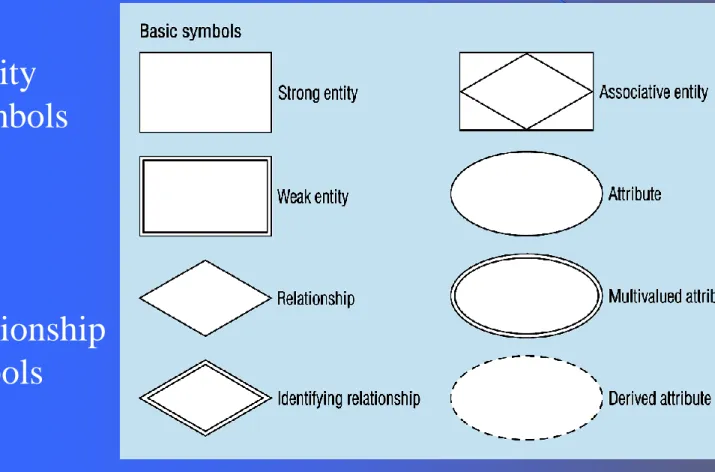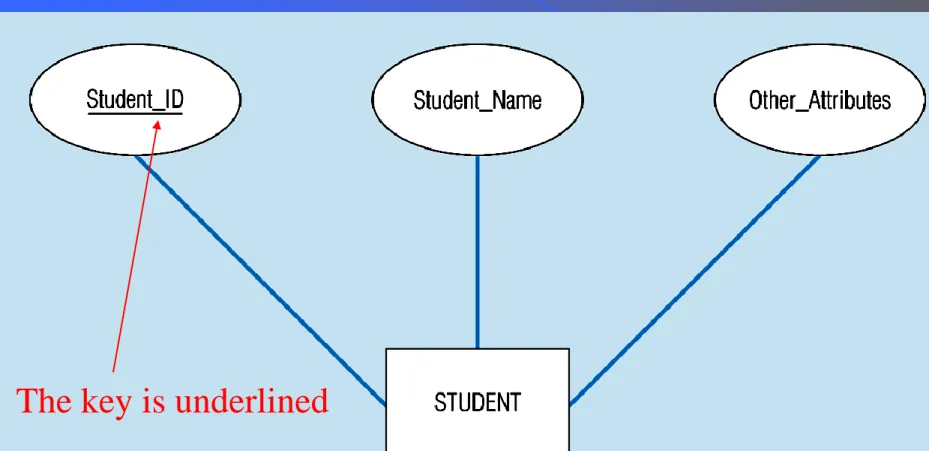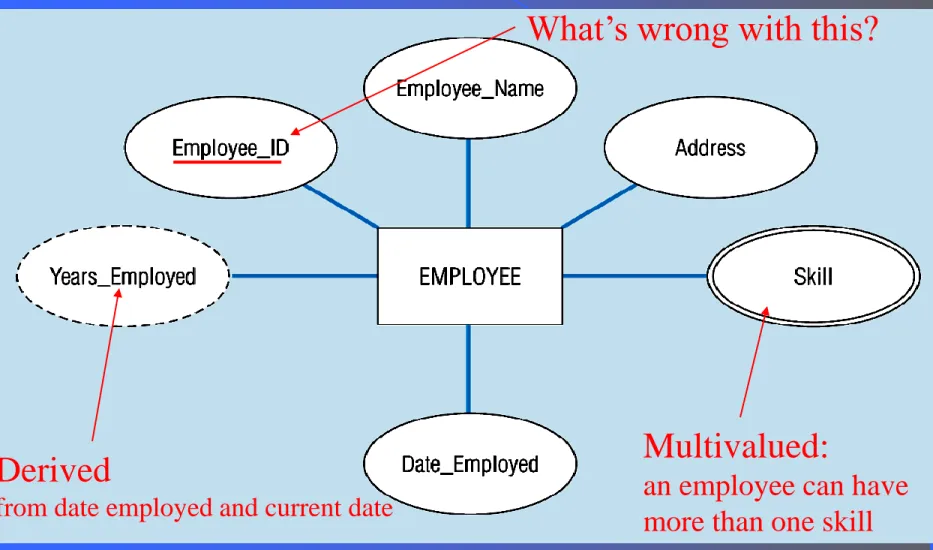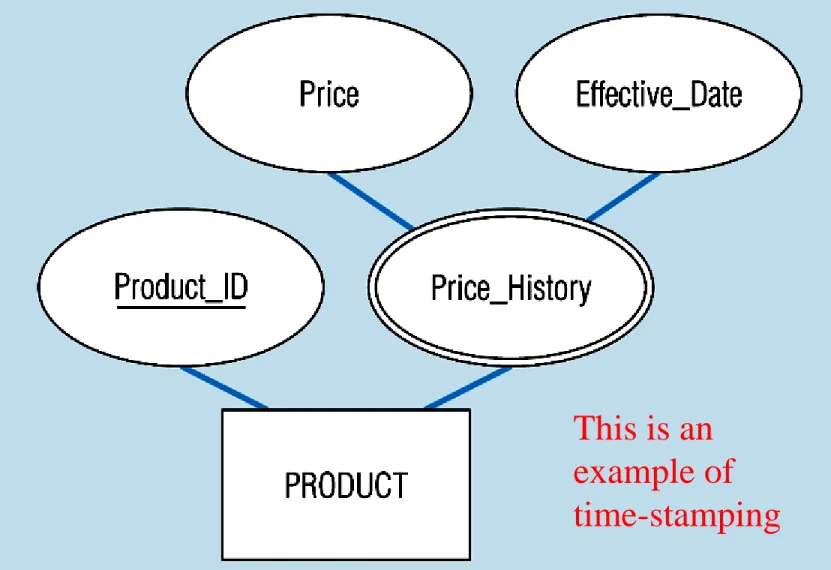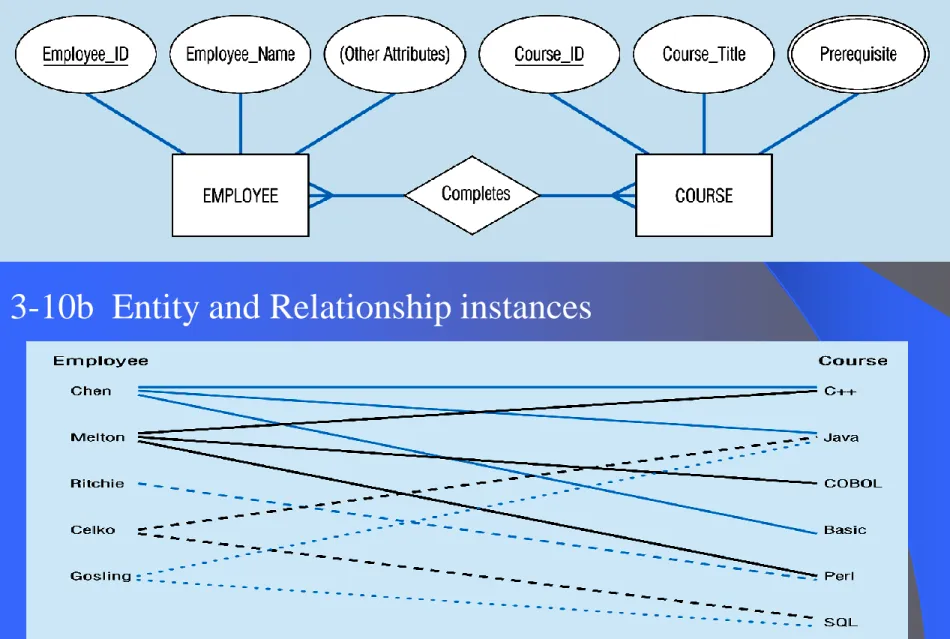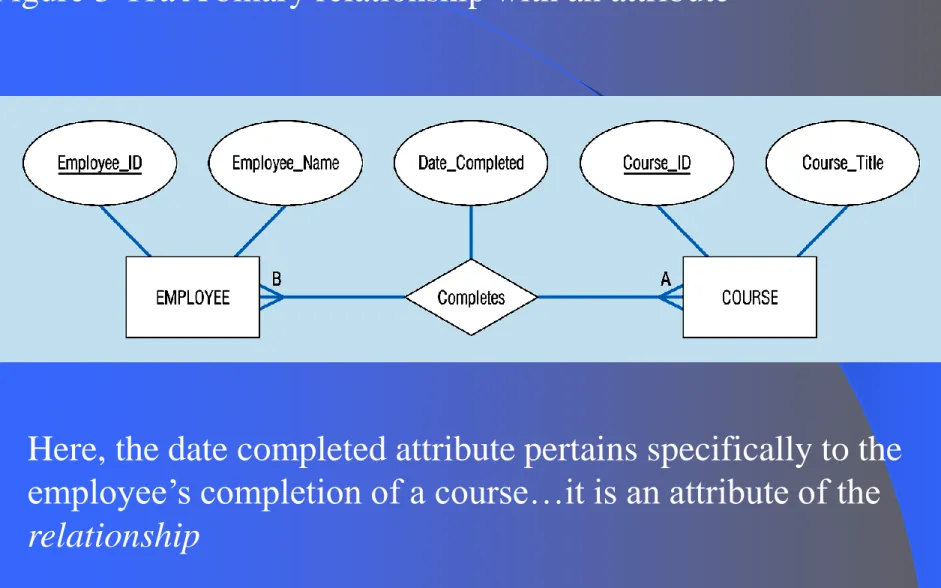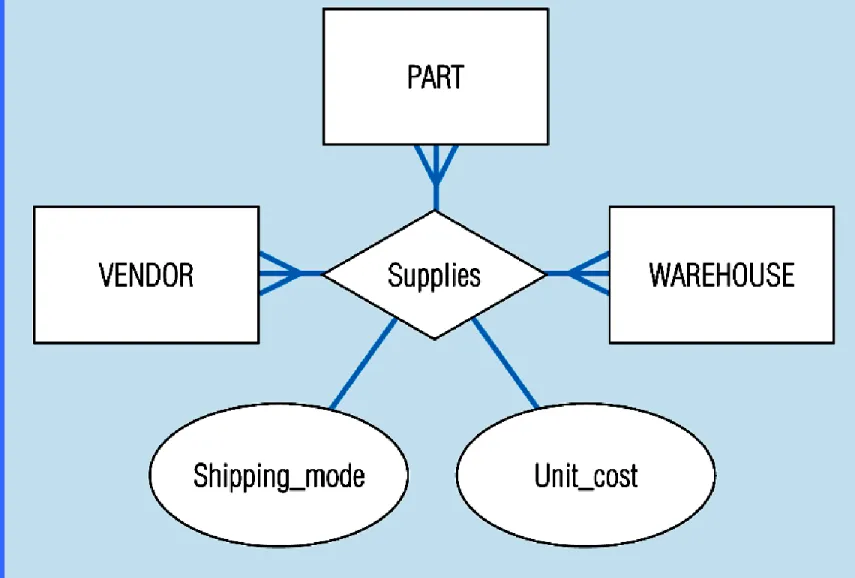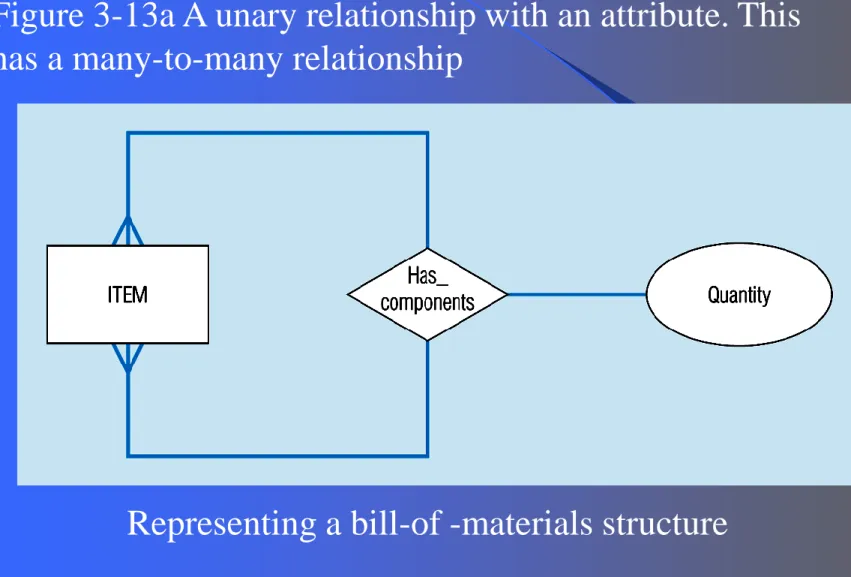Chapter 3:
Modeling Data in the Organization
Modern Database Management 6
thEdition
Jeffrey A. Hoffer, Mary B. Prescott, Fred R.
SDLC Revisited – Data Modeling is an Analysis Activity
(figures 2.4, 2.5)
Project Identification and Selection
Project Initiation and Planning
Analysis
Physical Design
Implementation Logical Design
Purpose –thorough analysis
Deliverable – functional system specifications
Database activity –
conceptual data modeling
Business Rules
Statements that define or constrain some aspect of the business
Assert business structure
Control/influence business behavior
Expressed in terms familiar to end users
Automated through DBMS software
A Good Business Rule is:
Declarative – what, not how
Precise – clear, agreed-upon meaning
Atomic – one statement
Consistent – internally and externally
Expressible – structured, natural language
Distinct – non-redundant
Business-oriented – understood by business
E-R Model Constructs
Entity instance - person, place, object, event, concept (often corresponds to a row in a table)
– Entity Type – collection of entities (often corresponds to a table)
Attribute - property or characteristic of an entity type (often corresponds to a field in a table)
Relationship instance – link between entities
(corresponds to primary key-foreign key equivalencies
in related tables)
Sample E-R Diagram (figure 3-1)
Figure 3-2 -- Basic E-R Notation
Entity symbols
Relationship symbols
Attribute symbols A special entity that is also a
relationship
What Should an Entity Be?
SHOULD BE:
–
An object that will have many instances in the database
–
An object that will be composed of multiple attributes
–
An object that we are trying to model
SHOULD NOT BE:
–
A user of the database system
Inappropriate entities
System user System output
Figure 3-4
Attributes
Attribute - property or characteristic of an entity type
Classifications of attributes:
–
Simple versus Composite Attribute
–
Single-Valued versus Multivalued Attribute
–
Stored versus Derived Attributes
–
Identifier Attributes
Identifiers (Keys)
Identifier (Key) - An attribute (or
combination of attributes) that uniquely identifies individual instances of an entity type
Simple Key versus Composite Key
Candidate Key – an attribute that could be a
key…satisfies the requirements for being a
Characteristics of Identifiers
Will not change in value
Will not be null
No intelligent identifiers (e.g. containing locations or people that might change)
Substitute new, simple keys for long,
composite keys
Figure 3-7 -- A
composite
attributeAn attribute broken into
component parts
Figure 3-9a – Simple key attribute
The key is underlined
Figure 3-9b -- Composite key attribute
The key is composed
Figure 3-8 -- Entity with a multivalued attribute (Skill) and derived attribute (Years_Employed)
Derived
from date employed and current date
What’s wrong with this?
Multivalued:
an employee can have
Figure 3-19 – an attribute that is both multivalued and composite
This is an
More on Relationships
Relationship Types vs. Relationship Instances
– The relationship type is modeled as the diamond and lines between entity types…the instance is between specific entity instances
Relationships can have attributes
– These describe features pertaining to the association between the entities in the relationship
Two entities can have more than one type of
relationship between them (multiple relationships)
Associative Entity = combination of relationship
and entity
Degree of Relationships
Degree of a Relationship is the number of entity types that
participate in it
– Unary Relationship
– Binary Relationship
Degree of relationships – from figure 3-2
One entity related to another of the same
Entities of two different types related
Entities of three different types
Cardinality of Relationships
One – to – One
– Each entity in the relationship will have exactly one related entity
One – to – Many
– An entity on one side of the relationship can have many related entities, but an entity on the other side will have a maximum of one related entity
Many – to – Many
Cardinality Constraints
Cardinality Constraints - the number of instances of one entity that can or must be associated with each instance of another entity.
Minimum Cardinality
–
If zero, then optional
–
If one or more, then mandatory
Maximum Cardinality
Cardinality – figure 3-2
Unary relationships -- figure 3-12a
Binary relationships – figure 3-12b
Ternary relationships –figure 3-12c
Basic relationship with only maximum cardinalities showing – figure 3-16a
Mandatory minimum cardinalities – figure 3-17a
Figure 3-17c
Optional cardinalities with unary degree, one-to-one relationship
Figure 3-10a Relationship type
3-10b Entity and Relationship instances
Figure 3-11a A binary relationship with an attribute
Here, the date completed attribute pertains specifically to the employee’s completion of a course…it is an attribute of the relationship
Figure 3-12c -- A ternary relationship with attributes
Figure 3-13a A unary relationship with an attribute. This has a many-to-many relationship
Examples of multiple relationships – entities can be related to one another in more than one way
Figure 3-21a Employees and departments
o
Figure 3-21b -- Professors and courses (fixed upon constraint)
Here,max cardinality constraint is 4
Figure 3-15:
Multivalued attribute vs. relationship.
Alternative approaches
Strong vs. Weak Entities, and Identifying Relationships
Strong entities
– exist independently of other types of entities
– has its own unique identifier
– represented with single-line rectangle
Weak entity
– dependent on a strong entity…cannot exist on its own
– Does not have a unique identifier
– represented with double-line rectangle
Identifying relationship
– links strong entities to weak entities
Figure 3-5: Strong and weak entities
Associative Entities
It’s an
entity
– it has attributes AND it’s a
relationship
– it links entities together When should a relationship with attributes instead be an
associative entity?
– All relationships for the associative entity should be many
– The associative entity could have meaning independent of the other entities
– The associative entity preferably has a unique identifier, and should also have other attributes
– The associative may be participating in other relationships other than the entities of the associated relationship
Figure 3-11b: An associative entity (CERTIFICATE)
Associative entity involves a rectangle with a diamond inside.
Figure 3-13c -- an associative entity – bill of materials structure
This could just be a relationship with
Figure 3.18 -- Ternary relationship as an associative entity
Figure 3-22 E-R diagram for Pine
Valley Furniture
